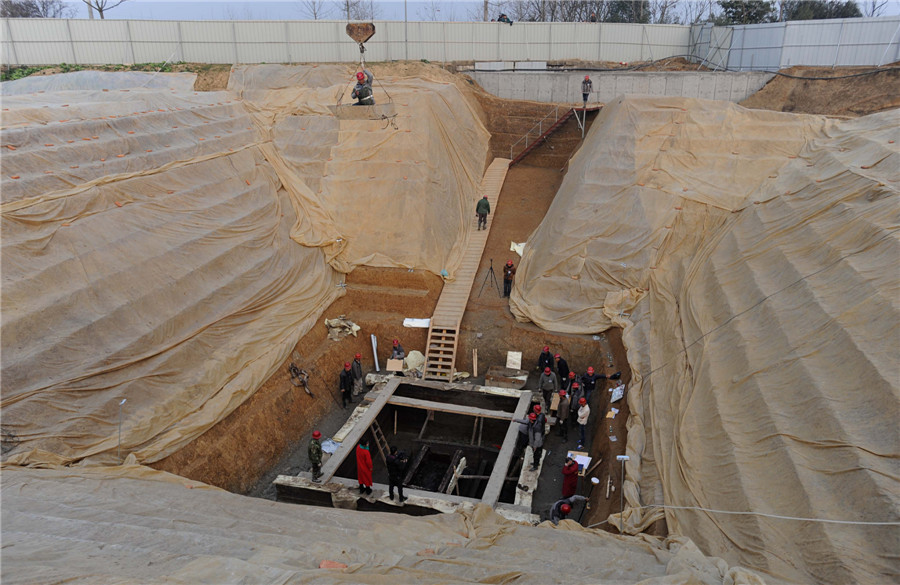 |
|
The excavation of Wangshanqiao No.1 Chu tomb in Jingzhou city, Central China's Hubei province, is seen on Jan 17, 2015. [Photo by Chen Liang/asianewsphoto.com] |
Archaeologists finished the excavation of the coffins at the Wangshanqiao No. 1 Chu tomb in Jingzhou city of Central China's Hubei province on Saturday.
About 79 cultural relics were unearthed from the eastern chamber of the tomb, and most of them are bamboo and wood lacquers, with some bronze wares.
The discovery of three lifelike bronze animal figurines, which are 15-centimeter-long in a shape of ox-head and tiger body and exquisitely made, was a big surprise to the archaeologists.
However, when they opened the main coffin they found the black planks scattered around the corpse had rotten and the body had melted into mud with only pieces of the skull left.
Through preliminary identification, archaeologists believe that the owner of the tomb was a male. The corpse's decay was the result of poor leak prevention in the tomb, which might have been damaged by grave robbers.
Meanwhile, a piece of jade was discovered inlayed on the cover plate of the inner coffin, but it remains a mystery.
"We have been unable to determine the usage of the jade, whether it was part of burial custom in ancient times or an ornament of the tomb owner. It also could be some sort of incantation. The ancients of Chu believed in witchcraft. Ancient Chu people would use something at the burial ceremony to ward off evil spirits around the tomb," said Wang Mingqin, curator of Jingzhou Museum.
The excavation of the tomb's chariot pit and sacrifice pit, as well as Wangshanqiao No. 2 Chu tomb will continue after the Spring Festival, according to archaeologists.
|
|
|
|
|
|
|
|